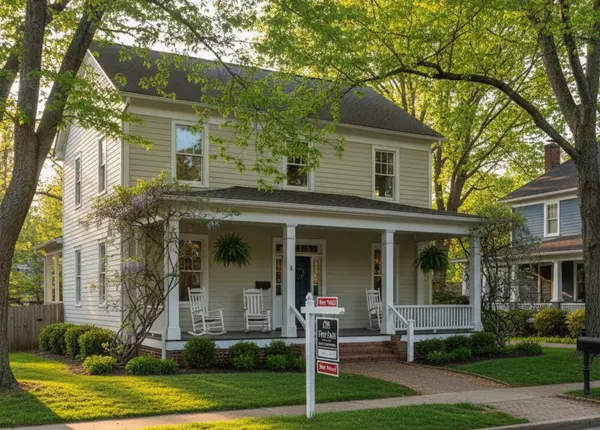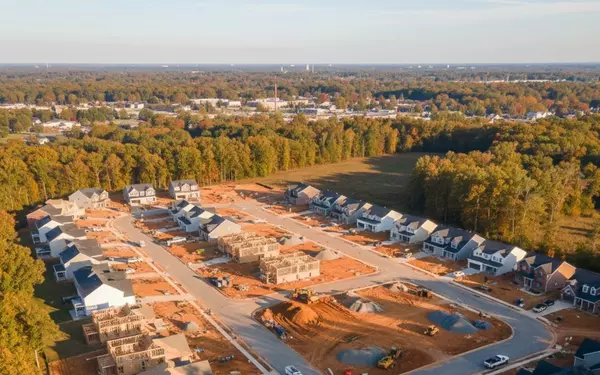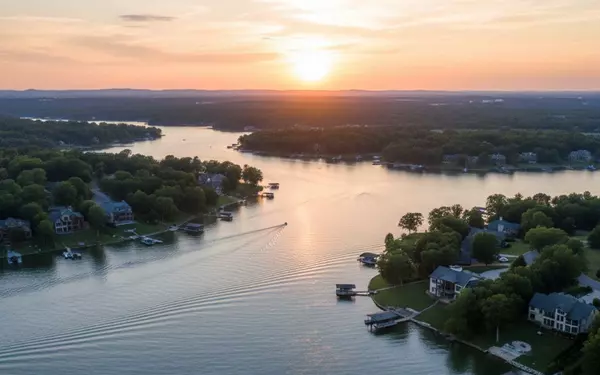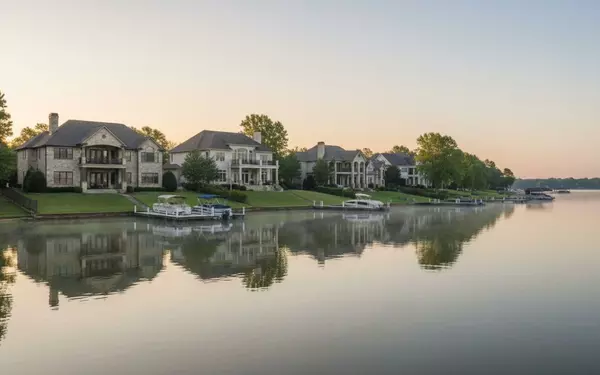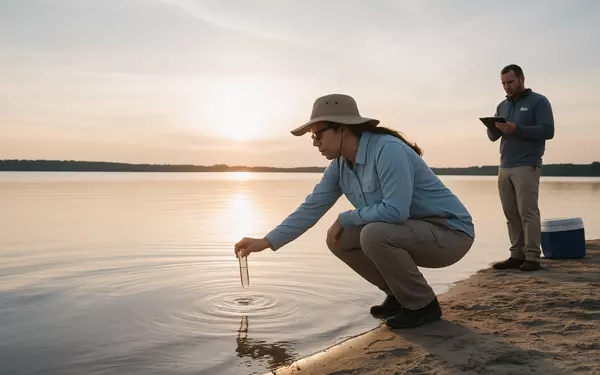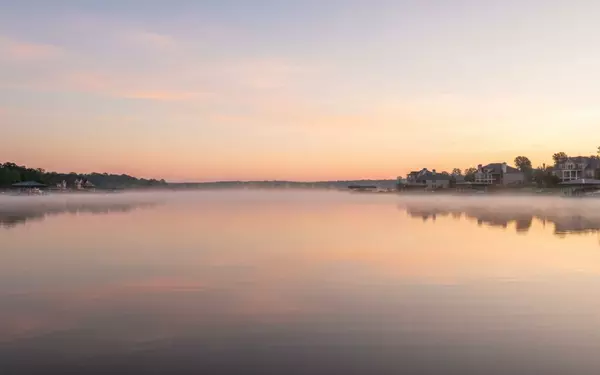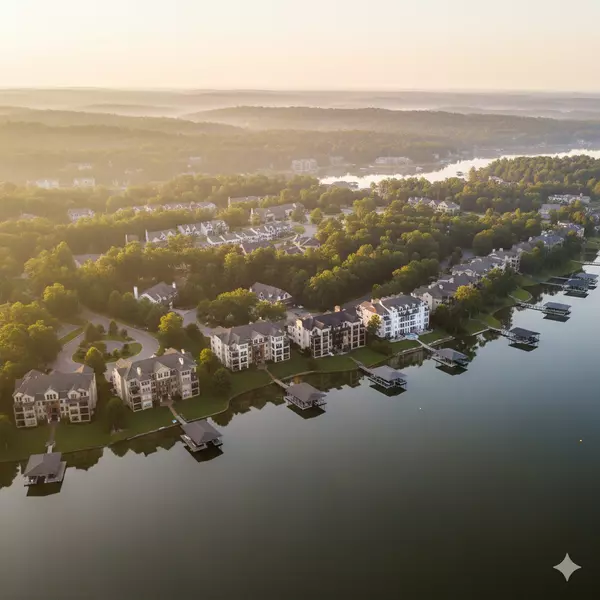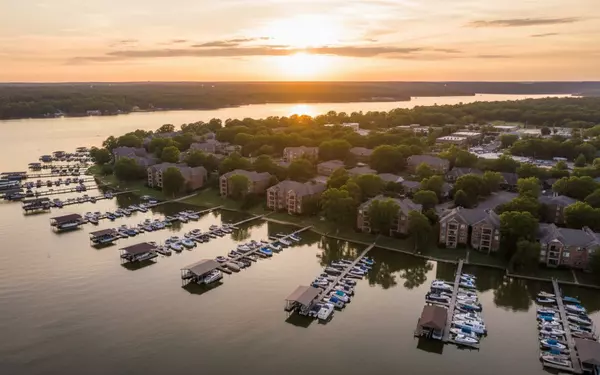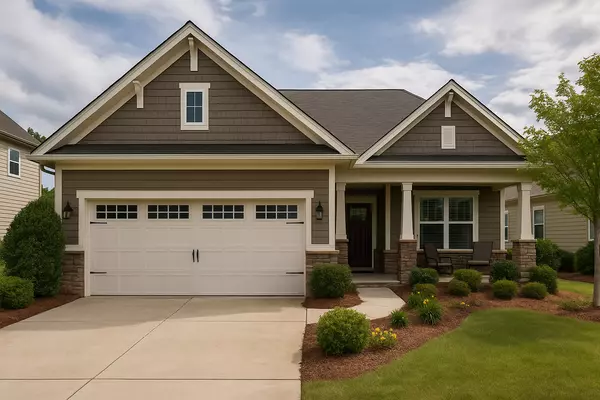Lake Norman Home Inspection Guide for Davidson Buyers (2025): Waterfront & Dock Specifics
Updated October 20, 2025

Lake Norman waterfront properties near Davidson require specialized inspection protocols that go far beyond standard home evaluations. These properties face unique challenges including dock compliance with Duke Energy regulations, seawall integrity, moisture intrusion from lakeside humidity, and strict riparian buffer restrictions that can cost buyers tens of thousands if overlooked during the inspection process.
Why Lake Norman Waterfront Home Inspections Are Critical for Davidson Buyers
Davidson area waterfront properties on Lake Norman present inspection challenges that standard home inspectors often miss. The lake's microclimate creates elevated humidity levels year-round, leading to accelerated wood rot in crawl spaces and moisture intrusion issues. Duke Energy's jurisdiction over all structures at the 760-foot elevation line means dock permits, compliance violations, and unpermitted modifications can trigger enforcement actions or costly remediation requirements, and in some cases, civil penalties.
Additionally, Lake Norman's water levels fluctuate up to 8 feet annually between full pond (760 feet above sea level) and seasonal lows (752-754 feet), affecting dock usability and boat lift functionality. North Carolina's 50-foot riparian buffer restricts shoreline modifications, while dock permits must transfer properly with property ownership to avoid compliance issues.
Most critically, many sellers make unpermitted dock modifications over the years - even small repairs like replacing boards require Duke Energy approval. Buyers who inherit these violations face costly remediation and potential loss of dock access under regulations enforced by Duke Energy Lake Services (Catawba–Wateree Project Shoreline Management Plan).
Essential Pre-Inspection Documentation for Lake Norman Properties
Dock Permit Verification
Before scheduling any inspection, request comprehensive dock permit documentation from the seller. The Duke Energy pier permit should be in the seller's name with a visible permit plate attached to the dock displaying the permit number. If sellers cannot provide current permits, they may need to submit a transfer application triggering a Duke Energy compliance inspection.
Verify the existing dock structure matches original permitted plans exactly. Many waterfront property owners make incremental modifications over time without realizing Duke Energy approval is required for any changes, including basic maintenance like replacing decking boards.
Property Survey and 760-Foot Elevation Line
Request a current property survey clearly showing the 760-foot elevation line marking Lake Norman's full pond level and Duke Energy's regulatory boundary. This line determines where your property ends and what modifications you can legally make. Small slivers of land sometimes exist between lot lines and the 760-foot line, falling under Duke Energy control rather than private ownership.
The survey must also show the 50-foot vegetative buffer extending inland from the 760-foot line. This buffer divides into Zone 1 (inner 30 feet requiring complete preservation) and Zone 2 (outer 20 feet allowing managed vegetation only).
Water Depth Documentation
Obtain documented water depth measurements at the dock and boat slip entrance. Lake Norman's seasonal water level variations dramatically affect dock usability - if you're viewing in February when levels are around 756 feet, understand how that dock performs in late summer when levels drop to 752-754 feet.
Boat lifts require minimum 3-4 feet of water depth to lower properly. A dock showing 8 feet at full pond may only have 3-4 feet at seasonal lows, making it borderline unusable for most vessels.
Schedule a consultation with our Lake Norman waterfront specialists to discuss your specific property inspection needs.
Comprehensive Dock Inspection Protocol
Standard home inspectors rarely examine docks with the thoroughness required for Lake Norman properties. Consider hiring specialized dock inspectors or marine contractors familiar with local regulations and conditions.
Structural Integrity Assessment
Deck and Walking Surfaces: Inspect all decking lumber for splinters, rot, protruding fasteners, and slick spots. Walk the entire deck testing for excessive spring, deflection, or lateral movement that indicates structural weakness.
Railings and Safety Features: Verify railings are structurally sound and properly secured. Walkways from shore to dock require at least one handrail at 42-inch minimum height per safety regulations.
Piling and Support Inspection: Examine pilings for signs of rot, termite damage, or wood-destroying fungus, particularly where pilings enter the water - the highest stress zone. Look for movement, erosion around the base, or separation from dock structure.
Anchoring Systems: For floating docks, check cables for fraying or wear, especially at attachment points. Verify deadman cables aren't attached to trees (prohibited by regulations) and inspect stiff arms and hardware for rust or damage.
Flotation Systems: All flotation must comply with North Carolina Administrative Code requirements using encapsulated polystyrene or approved equivalent materials that won't become waterlogged when punctured. Verify flotation adequacy, stability, and secure attachment. Collapsed floats stress the entire dock system and can damage both lifts and dock structures.
Duke Energy Compliance Verification
Measure dock dimensions against permit specifications. Lake Norman docks generally follow combined over-water footprint limits of approximately 1,000 square feet for platforms, slips, and covered areas. In coves, docks cannot extend more than one-third the cove width measured from your shore to the opposite shore.
Verify required setbacks from neighboring property lines and confirm two white reflectors are mounted at each outermost corner, 6 inches above full pond level, reflecting parallel to shore and across water.
Boat Lift Inspection Essentials
Boat lifts represent significant value and potential liability requiring thorough annual inspection, ideally at season start and end.
Critical Safety Components
Cable Condition: This represents the most critical safety item. Inspect all cables for fraying, rust spots, broken strands, kinks, or deformities. Even minor fraying indicates immediate replacement necessity - cables under load can snap suddenly causing injury and property damage.
Cable Alignment and Tension: Check that cables wind tightly and neatly on winch drums. Loose or improperly wound cables can backlash like fishing reels, creating dangerous tangles. Verify even tension across all cables.
Lift Balance and Control Arms: The boat should sit evenly on the lift. Uneven weight distribution indicates alignment problems or structural issues. Verify control arms are straight and undamaged.
For floating lifts, control arms should be adjusted every 2-3 years as dock float aging changes buoyancy characteristics.

Seawall Inspection: Your Property's First Line of Defense
Seawalls protect waterfront properties from erosion and maintain land stability. Failure can be catastrophic and extremely expensive to repair, while well-maintained seawalls significantly increase property values.
Visual Damage Assessment
Cracks and Separation: Look for visible cracks in seawall faces, especially vertical cracks or separation from caps. These indicate pressure from behind the wall or cap failure requiring immediate attention.
Structural Alignment: Step back and sight along the wall looking for any visible lean, bulge, or deviation from vertical. These signs indicate the wall is failing when soil pressure behind overcomes structural capacity.
Soil Erosion Indicators: Walk areas behind seawalls looking for sinkholes or depressions, even tiny ones hidden under grass. These indicate soil erosion behind the wall - a leading cause of seawall failure.
Foundation Gaps: Look for visible gaps where soil has settled beneath seawall bases. These gaps compromise structural support and require immediate filling.
While visual inspection identifies obvious problems, subsurface issues require professional evaluation by marine contractors who can assess soil conditions, drainage, and structural capacity.
Lake Norman Condominium-Specific Inspection Considerations
Waterfront condominiums add complexity layers beyond single-family homes, particularly regarding shared dock facilities and HOA responsibilities.
HOA Dock Facilities Assessment
Request HOA dock inspection reports and maintenance records. Community docks require regular safety inspections - ideally comprehensive illustrated inspections with documentation. Determine when the last full electrical and structural review occurred.
Review HOA rules governing dock use, boat size restrictions, slip assignments, and guest policies. Understand your financial responsibility for shared dock repairs - special assessments for major dock work can run tens of thousands per unit.
Elevator Safety Compliance
North Carolina House Bill 619 (effective October 2022) imposes strict residential elevator safety requirements. Elevators must have gaps no greater than 4 inches between hoistway landing doors and car doors, with doors withstanding 75 pounds of force without displacement.
Non-compliant elevators must be taken out of service immediately until corrected, with violations constituting Class 2 misdemeanors. Request documentation showing elevator compliance and recent inspection certificates.
Interested in learning more about living near Davidson College and its impact on real estate values?
Moisture and Mold: The Hidden Waterfront Threat
Lake Norman's proximity creates localized humidity challenges year-round, particularly during winter-to-spring transitions when trapped moisture becomes active.
Crawl Space Inspection Protocol
Waterfront properties face elevated crawl space moisture vulnerability leading to wood rot, mold, and structural damage requiring comprehensive assessment.
Wood Rot Assessment: Inspect floor joists, beams, and subfloor for soft spots, discoloration, or visible rot. Use flashlights and probe suspicious areas with screwdrivers - rotten wood feels soft or crumbles under pressure.
Moisture Intrusion Detection: Look for standing water, watermarks on piers or walls, wet insulation, or condensation on ductwork indicating active moisture problems requiring immediate remediation.
Vapor Barrier Verification: Confirm 100% ground coverage with proper vapor barriers (minimum 12-mil thickness). Exposed ground allows moisture to wick up into floor structures promoting rot and mold growth.
Professional Mold Testing Considerations
Consider professional mold inspection and air quality testing, especially if homes experienced flooding or show visible moisture issues. Lake Norman's microclimate and lakeside humidity create ideal conditions for hidden mold growth requiring specialized detection.
Testing should include visual inspection, air sampling, surface sampling, and bulk sampling where appropriate. Certified mold inspectors can identify species and recommend remediation protocols if needed.
Compare Davidson to other Lake Norman communities in our comprehensive town comparison guide.
Standard Home Inspection Elements for Waterfront Properties
While dock and moisture issues are lake-specific, don't neglect standard inspection items that become more critical in waterfront environments.
Foundation and Structural Components
Examine settlement cracks, moisture problems, and structural modifications. Lake Norman's soil conditions can cause foundation movement requiring verification of proper grading ensuring water flows away from foundations.
Roof and Gutter Systems
Roofs experience excessive weather exposure on lakes requiring inspection for missing or damaged shingles, adequate flashing, proper ventilation, and functional gutters. Clogged gutters exacerbate moisture intrusion problems.
HVAC System Performance
Lakeside humidity and salt air accelerate HVAC corrosion reducing system lifespan. Verify systems function properly and receive regular maintenance to prevent premature failure.
Plumbing and Water Systems
Check for leaks, water pressure issues, and water heater condition. Determine if homes have public water or private wells - wells near surface water may require additional filtration systems.
Flood Insurance and Risk Assessment
Lake Norman waterfront properties face increased flood risk requiring specialized insurance coverage beyond standard homeowners policies.
Standard homeowners insurance does NOT cover flood damage. Separate flood policies through the National Flood Insurance Program (NFIP) or private insurers are essential for waterfront properties.
Key Insurance Considerations
- NFIP covers up to $250,000 for structures, $100,000 for contents
- 30-day waiting period before coverage takes effect - purchase early
- Mortgage lenders may require flood insurance in high-risk zones
- Elevated homes and wind mitigation features can reduce premiums
Request flood zone determinations and elevation certificates as these documents significantly affect insurance costs.
Learn about commuting from Davidson to Charlotte if you're considering waterfront living while working in the city.
Using Inspection Results for Strategic Negotiation
Thorough waterfront inspections provide powerful negotiation leverage when used strategically during purchase negotiations.
Prioritizing Major Issues
Focus repair requests on safety concerns, structural problems, and big-ticket items like dock repairs, seawall issues, wood rot, or major systems failures. Avoid nickel-and-diming sellers over cosmetic issues as this damages negotiation goodwill.
Obtaining Contractor Quotes
Secure estimates from licensed contractors for major repairs. Documented quotes strengthen negotiating positions and provide concrete cost evidence for repair negotiations.
Credit vs. Repair Requests
Many sellers prefer offering closing cost credits rather than making repairs themselves, allowing buyers to hire trusted contractors and control quality. For $15,000 dock repairs, request $15,000 credits and handle repairs post-closing.
Critical Red Flags That Should Stop Deals
Certain inspection findings should give Davidson buyers serious pause about proceeding with purchases.
Deal-Breaking Issues
Unpermitted Dock Modifications: If docks lack Duke Energy permits or existing structures differ significantly from permitted plans, buyers inherit compliance problems. Duke can require removal and restoration, potentially losing dock access for up to 5 years.
Major Seawall Failure: Large cracks, significant lean, or extensive soil erosion behind walls indicate imminent failure. Seawall replacement costs $30,000-$100,000+ and becomes urgent when failing.
Extensive Structural Wood Rot: Widespread rot in floor systems, beams, or subflooring requires major structural repairs potentially costing $15,000-$50,000+ depending on extent.
Environmental Shoreline Classification: Properties with "Environmental" classified shorelines cannot have docks built. If dock access is important, this represents a complete deal-breaker.
Inadequate Water Depth: If water depth at docks drops below 3 feet seasonally, boat access becomes impossible for most vessels. Dredging permits are difficult to obtain and costly.
Explore our comprehensive guide on Davidson NC property taxes to understand the full cost of waterfront ownership.
Working with Lake Norman Specialists
Davidson waterfront buyers benefit enormously from hiring professionals with specific Lake Norman expertise rather than general practitioners.
Essential Professional Team
Specialized Home Inspectors: Choose inspectors licensed in North Carolina who specifically mention waterfront or dock inspections in their services. Ask about their experience with Lake Norman waterfront inspections.
Dock Inspection Specialists: Consider hiring specialized Lake Norman dock inspection services providing comprehensive multi-point assessments, regulatory compliance reviews, and detailed reports.
Marine Surveyors: For properties with boats or significant marine equipment, hire SAMS-certified marine surveyors familiar with Lake Norman conditions and regulations.
Real Estate Attorneys: Lake Norman transactions benefit from attorney review, especially regarding dock permits, Duke Energy compliance, and riparian rights. Mooresville-based attorneys familiar with Duke Energy regulations add significant value.
Post-Inspection Action Plan
Once inspections are complete, follow this systematic approach to protect your interests and ensure successful closings.
- Review all inspection reports thoroughly with your agent and attorney, prioritizing findings into safety/urgent, major systems, minor issues, and cosmetic categories.
- Obtain contractor quotes for significant repairs, especially dock work, seawall issues, structural repairs, and major systems requiring attention.
- Prepare repair addendums focusing on safety, structural, and high-cost items while being reasonable but firm on critical waterfront issues.
- Negotiate strategically understanding seller positions and current market conditions where buyers often have more leverage than in previous years.
- Document everything in writing - never rely on verbal agreements about dock transfers, repairs, or Duke Energy compliance issues.
- Verify dock permit transfer completion before closing, making this a closing contingency in purchase contracts.
Schedule a consultation to discuss your Lake Norman waterfront inspection strategy.
Protecting Your Lake Norman Investment
Lake-specific inspections aren't formalities - they're primary defenses against inheriting expensive problems that can cost tens of thousands within the first year of ownership.
The unique combination of Duke Energy regulations, riparian buffers, water level fluctuations, moisture challenges, and specialized marine infrastructure means Lake Norman properties require expertise beyond standard home inspections. Following this comprehensive guide and hiring lake-specific specialists positions buyers to negotiate confidently, avoid costly surprises, and enjoy Davidson waterfront homes with complete peace of mind.
Bottom Line: Invest the extra $500-$1,500 in specialized dock inspections, mold testing, and marine contractor assessments. These investments routinely save Davidson buyers $15,000-$50,000 in repairs and sometimes prevent disastrous purchases altogether.
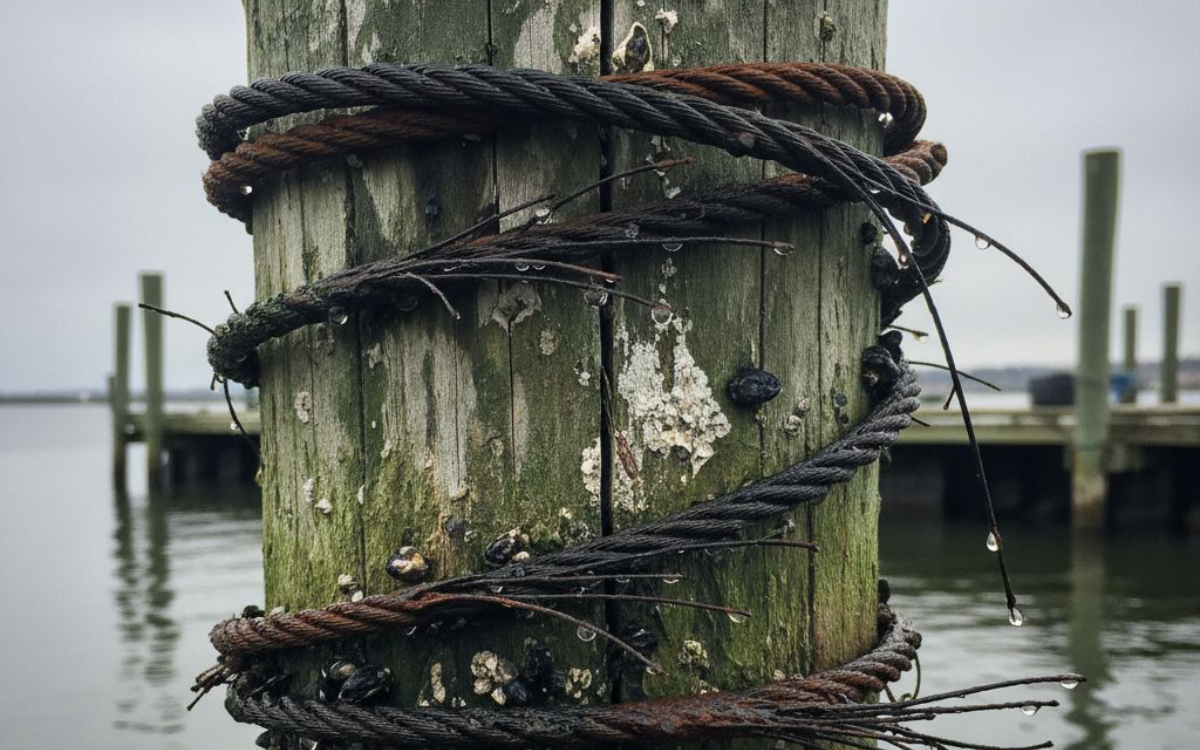
Frequently Asked Questions
- Q: How much do specialized Lake Norman waterfront inspections cost?
-
A: Specialized waterfront inspections typically cost $500-$1,500 beyond standard home inspections, including dock inspections, marine contractor assessments, and mold testing. This investment routinely saves buyers $15,000-$50,000 in unexpected repairs.
- Q: What happens if the seller cannot provide dock permit documentation?
-
A: Sellers must complete Duke Energy permit transfers before closing or provide documentation showing compliance. Without proper permits, buyers inherit compliance issues and potential enforcement actions. Make dock permit transfer a closing contingency in your purchase contract.
- Q: Are flood insurance requirements different for Lake Norman waterfront properties?
-
A: Yes, waterfront properties require separate flood insurance policies beyond standard homeowners coverage. NFIP policies cover up to $250,000 for structures with a 30-day waiting period before coverage begins. Purchase flood insurance early in the buying process.
Ready to explore Davidson waterfront properties? Learn more about Davidson NC schools or compare Lake Davidson vs Lake Norman to make informed decisions about your Lake Norman investment.
Categories
- All Blogs (55)
- invest in coastal NC (1)
- Investing in Lake Norman (1)
- Living in Carolina Beach NC (2)
- Living in Cornelius NC (1)
- Living In Davidson NC (2)
- Living in Huntersville NC (1)
- Living in Kure Beach NC (1)
- Living in Mooresville NC (1)
- Living in Surf City NC (2)
- Living in Topsail Island NC (4)
- Living in Wriightsville Beach NC (3)
- Living on Lake Norman (30)
- Move to Carolina Beach, NC (1)
- Move to Kure Beach NC (1)
- Move to Surf City NC (1)
- Move to Topsail Island NC (1)
- Moving to Wrightsville Beach NC (1)
- Retire in Carolina Beach NC (1)
- retire in Kure Beach NC (1)
- Retire in Surf City NC (1)
- Retire in Topsail Island NC (1)
- Retire in Wrightsville Beach NC (1)
Recent Posts
